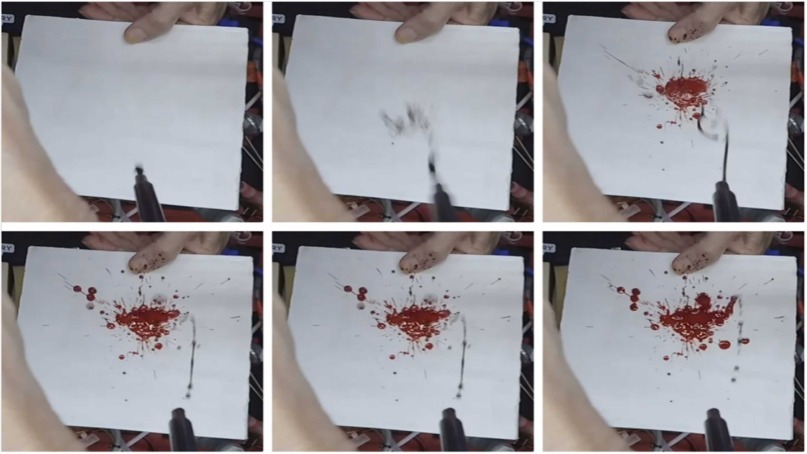As humanity ventures beyond Earth’s bounds, scientists are confronted with new challenges in applying forensic science to extraterrestrial environments. A groundbreaking study by Staffordshire University and the University of Hull delves into the behavior of blood in microgravity and its implications for bloodstain pattern analysis aboard spacecraft.
Led by bloodstain expert Zack Kowalske, a Crime Scene Investigator based in Atlanta, U.S., the study sheds light on the behavior of liquid blood in altered gravity environments—a critical area with far-reaching implications for forensic investigations in space.
“Studying bloodstain patterns can provide valuable reconstructive information about a crime or accident. However, little is known about how blood behaves in microgravity, making this research essential for future space missions,” Kowalske explains.
The experiments were conducted aboard a Zero Gravity Corporation modified Boeing 727 parabolic aircraft. By simulating reduced gravity conditions between 0.00 and 0.05 g, researchers propelled blood droplets toward targets and reconstructed the angle of impact.
Co-author Professor Graham Williams from the University of Hull elaborates on the findings, stating, “In microgravity, the absence of gravitational influence amplifies surface tension and cohesion of blood droplets. This leads to slower spread rates and altered shapes and sizes compared to Earth. Surprisingly, the absence of gravity did not result in more accurate mathematical calculations due to the amplified effect of surface tension.”
This pioneering study marks the first investigation into blood behavior in free flight, offering crucial insights into forensic science in space. With the rapid evolution of space exploration technology, the need for reliable forensic techniques is becoming increasingly evident.
“We are entering a new era of forensic science, reminiscent of the mid-19th century when researchers began to decipher the meaning of bloodstains in relation to cause,” Kowalske reflects. “As we expand into space, astroforensics—a novel subdiscipline—is emerging. It is imperative to broaden our understanding of forensic sciences in non-terrestrial environments to meet the challenges of our space-faring future.”
The study underscores the importance of interdisciplinary research and collaboration as humanity ventures beyond the confines of Earth, paving the way for advancements in forensic science and ensuring the safety and success of future space missions.
